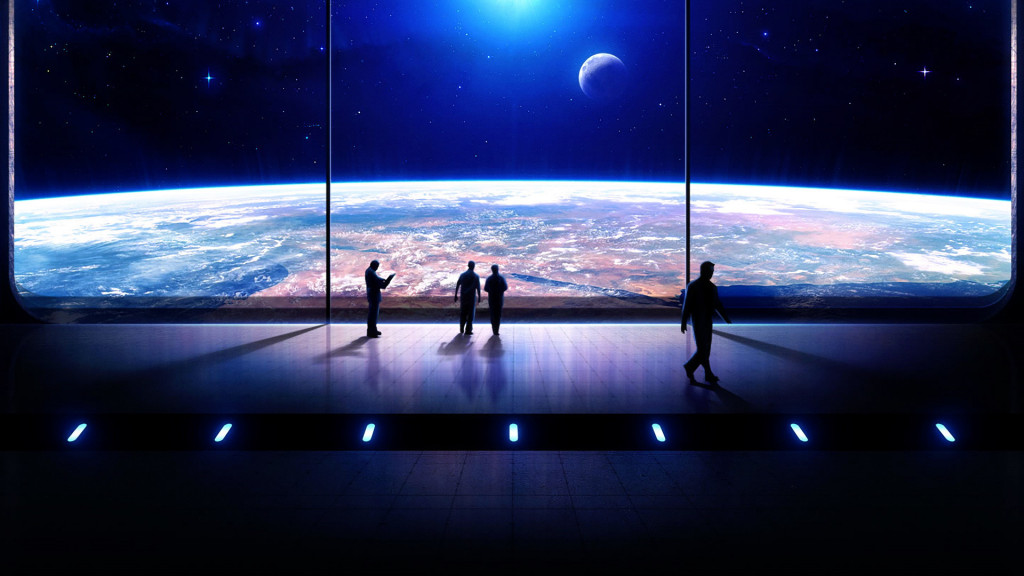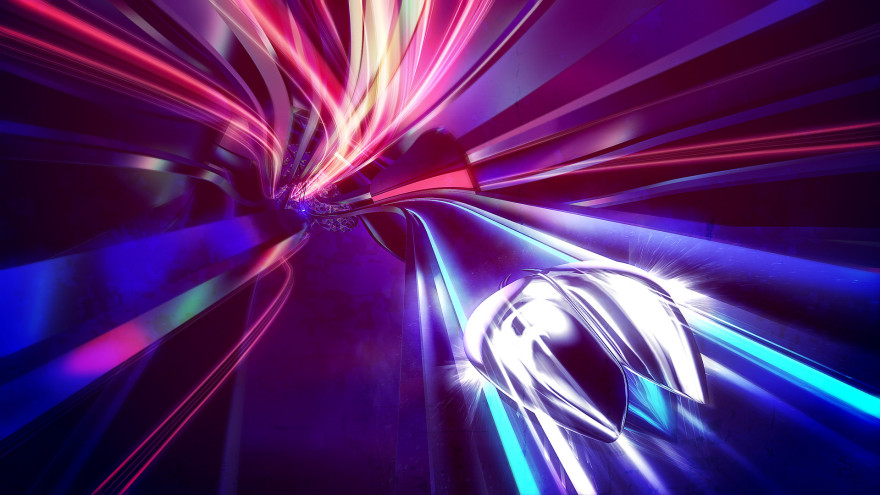The term “rhythm game” might call to mind images of a virtual band either slaying or bombing in front of a crowd. Usually, you’re cast as a musician strumming a fake guitar or a fake drum kit to the demands of a note highway, songs turned into timely button presses. Thumper throws all that shit out the window.
You play as a beetle who lives, breathes, and literally is metal. You are tasked with making the right moves as you try to survive the endless road to hell stretched out before you.”When you think of Rock Band or Guitar Hero, they’re trying to recreate this euphoria of commanding a crowd and appreciating your performance,” says one part of the two-man team behind the game, Brian Gibson. “But to me the best feeling is getting lost in it, being transported somewhere else, somewhere psychedelic and abstract.”
Thumper‘s abstract aspirations run all the way down to its musical influences as well. Aside from the obvious—Gibson is the bassist for kaleidoscopic noise metal duo Lightning Bolt—he also took to the often dissonant, uniquely un-melodic soundtracks for Stanley Kubrick’s 2001: A Space Odyssey (1968) and The Shining (1980).
In a sense, Thumper doesn’t even really cast you as the musician or artist. You are the instrument itself, receiving and embodying a beat as it strikes you instead of playing it. The game originally sprang from the concept of doing a single action and a turn, then transforming those into a recreation of a drum beat. “Basically, your button press is like hitting a bass drum and the turn is like hitting the snare,” Gibson explains.
Oh, and there’s one other thing that makes Thumper different from other rhythm games: its neon road to hell can be strapped to your fucking face.
With the recent port to PlayStation VR, Thumper crossed the line from a game grasping at abstractness and into an all-out fever dream. “That’s VR experience to aspire to, isn’t it? The fever dream,” Gibson muses. “Where you take off the gear, wake up, and can’t even describe it to someone else. It creates such a totally different order of logic from the real world that you can’t even make sense of it. I don’t think our game is there, but…”
But indeed.

From Gibson’s perspective, though, VR could spell out a revolutionary change in rhythm games. Previously, rhythm games were always tethered to the two-dimensional approach. It makes for a pretty superficial spatial relationship, forcing creators to use abstract concepts that ask you to perform an action whenever a horizontal axis crosses with a vertical axis. “Rhythm games had to actually make an area in space represent a location in time,” Gibson explains.
But VR forgoes the limitation of the flat screen, replacing abstractness with something much more visceral. “Spatial information is real information,” Gibson says. “And since VR uses stereo vision, it gives you so much more to work with,” Gibson says.
You can follow Thumper’s development and eventual release by visiting the website. Check out our ongoing coverage of GDC 2016 here.
